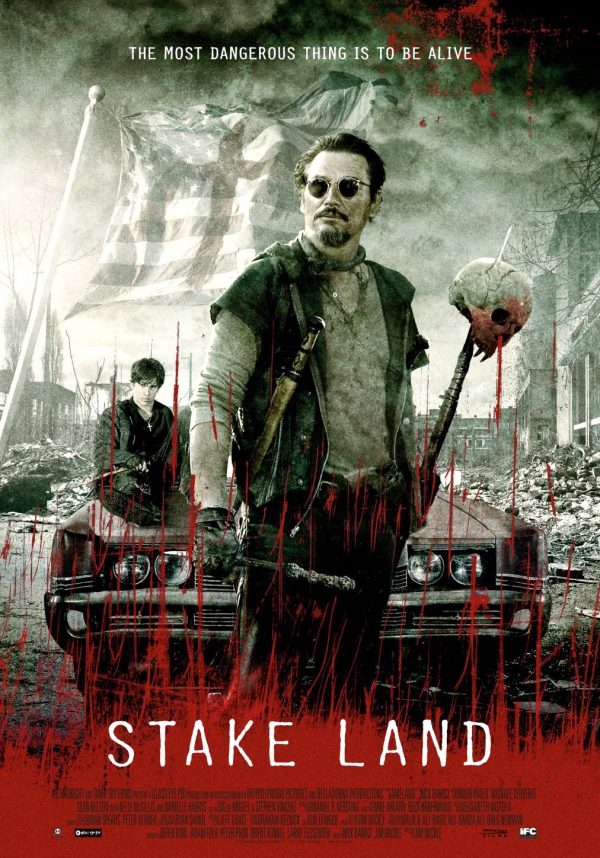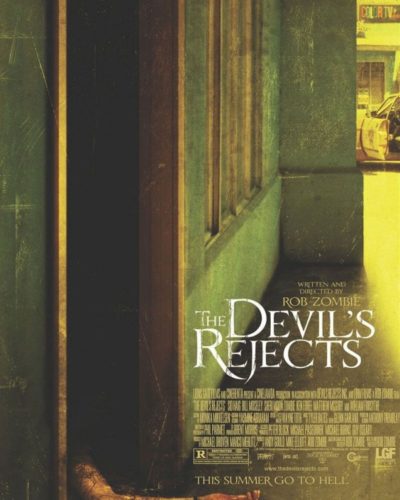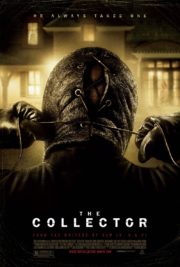“In a world of monsters, kindness is a rare commodity.” – Stake Land Dissected
Balancing a desolate backdrop with a sense of intimate urgency, Jim Mickle’s 2010 apocalyptic horror movie “Stake Land” plunges its fangs deep into a genre bloated with undead clichés only to emerge with a refreshingly raw and humanistic portrayal of a vampiric dystopia. It tells the story of Martin (Connor Paolo), a teenager pushed prematurely into a decaying, vampiric version of America’s heartland. Guided by a vampire hunter known as Mister (Nick Damici), the duo embarks on a perilous journey to a supposed safe haven known as “New Eden.”
The Crafting of Despair: The Look and Sound of Apocalypse
Whispers in the Dark – Atmosphere and Tone
Stake Land is less about the shock factor and more about creating an atmosphere thick with desolation and dread. The overture of terror here is methodical; Mickle weaves a sense of foreboding into every frame, building tension through the unpredictability of a world ravaged by creatures of the night. The vulturous ambiance of the world is as real as the fangs lurking within it.
Through the Vampire’s Gaze – Cinematography and Visuals
The cinematography by Ryan Samul contributes immensely to the film’s foreboding atmosphere. The lighting feels natural, often dim and shadowy, perfectly mimicking the bleak world the characters traverse. Camera angles are meticulously chosen to cast an eerie veil over even the most mundane scenes. There aren’t heavy uses of special effects, implying a reliance on practical effects that add to the tangibility of this vampiric apocalypse. A unique visual aspect is the use of color temperatures – cold blues for nights teeming with vampiric threats and warmer hues during fleeting moments of day when humanity takes a breath.
Whispering Screams – Soundtrack and Sound Effects
The auditory embellishments of Stake Land are subtle but powerful. The soundtrack by Jeff Grace is sparse, haunting, and fits the on-screen desolation like a glove. The brilliance lies in the interplay of silence against abrupt disturbances; a distant scream or a soft growl can tear through the stillness with startling effectiveness.
The Human Heart in Darkness – Story and Characters
More than Survivors – Performances
Watch Stake Land for the performances and stay for the horror. The characters are etched with a survivalist’s sharpest blade, and the actors embody these scars to perfection. Connor Paolo’s portrayal of Martin reflects a deer caught in headlights, forced to mature or die unceremoniously. Nick Damici infuses Mister with gruff pragmatism but not without a shadow of vulnerability—a masterclass in understated character execution.
The Many Faces of Fear – Horror Elements and Mechanics
Stake Land places its chips on psychological fear interspersed with moments of grisly confrontation. It’s a refreshing deviation from conventional vampire lore—each bloodsucker exudes a different kind of horror, stepping outside the box into subgenres ranging from body horror to survival horror, challenging the conventions of the vampire mythos.
Shivers and Shadows – Methods to Frighten
The film doesn’t rely on cheap thrills. The fright tactics are a sophisticated blend of suspense and existential dread, a slow-burning horror etching itself into the viewer’s psyche. True, there are moments of gore and bursts of action, but they’re not gratuitous; they serve as punctuation marks in the story’s grim prose.
The Undead Society – Themes and Commentary
Beneath the vampire-slaying surface, Stake Land is a poignant comment on society’s decay. It furthers the idea that in a collapsed world, humanity’s remnants can be both monstrously cruel and profoundly kind. The film examines themes of hope, religious fanaticism, and the concept of chosen family in the face of unspeakable horror.
A Stake Through the Heart of the Genre
Stake Land is an effective horror movie that eschews jump scares in favor of a chilling atmosphere, character-driven storytelling, and a poignant, allegorical narrative that resonates with current societal anxieties. Its strengths lie in its atmospheric tension, strong performances, and thoughtful thematic underpinnings.
For Whom the Stake Pierces
Horror aficionados tired of traditional vampire narratives will find solace in the arms of Stake Land. The film might also resonate with viewers who appreciate horror as a vehicle for storytelling and not just as a thrill ride. Its appeal transcends demographics, although a word of caution to those sensitive to violence: while not overwhelming, the film does not shy away from the brutal realities of its world.
In the Company of Nightmares
Comparatively, Stake Land could be nestled somewhere between the narrative depth of “The Road” and the vampiric brutality of “30 Days of Night.” It stands with one foot in the bleak storytelling of Cormac McCarthy’s world and the other in the visceral horror of David Slade’s chilling adaptation.
In conclusion, “Stake Land” is a film that transcends its genre to offer something more profound than just scares. It combines a post-apocalyptic road movie’s meditative pacing with the lurking terror of night creatures. Despite its occasional stumbles—certain plot contrivances and a hurried finale—it remains a unique stake in the heart of vampire folklore. Those embarking on this journey through the land of stakes should be prepared for an experience that is as contemplatively haunting as it is subtly horrifying.




